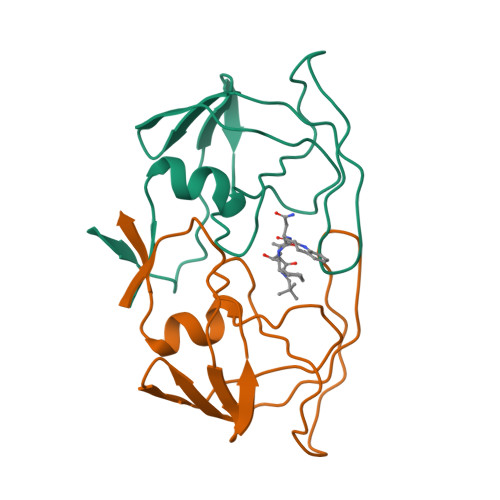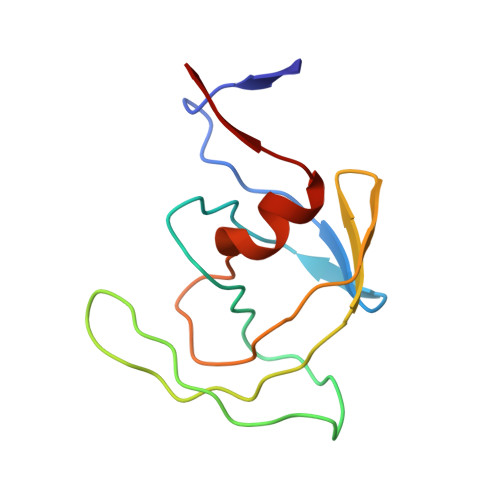The crystallographic structure of the protease from human immunodeficiency virus type 2 with two synthetic peptidic transition state analog inhibitors.
Mulichak, A.M., Hui, J.O., Tomasselli, A.G., Heinrikson, R.L., Curry, K.A., Tomich, C.S., Thaisrivongs, S., Sawyer, T.K., Watenpaugh, K.D.(1993) J Biological Chem 268: 13103-13109
- PubMed: 8514751
- Primary Citation of Related Structures:
1IVP, 1IVQ - PubMed Abstract:
The crystal structure of human immunodeficiency virus (HIV) type 2 protease has been determined in complexes with peptidic inhibitors Noa-His-Cha psi [CH(OH)CH(OH)]Val-Ile-Amp (U75875) and Qnc-Asn-Cha psi [CH(OH)CH2]Val-Npt(U92163) (where Noa is naphthyloxyacetyl, Cha is cyclohexylalanine, Amp is 2-aminomethylpyridine, Qnc is quinoline-2-carbonyl, and Npt is neopentylamine), which have dihydroxyethylene and hydroxyethylene moieties, respectively, in place of the normal scissile bond of the natural ligand. The complexes crystallize in space group P2(1)2(1)2(1), with one dimer-inhibitor complex per asymmetric unit and average cell dimensions of a = 33.28 A, b = 45.35 A, c = 135.84 A. Data were collected to approximately 2.5-A resolution. The model structures were refined with resulting R-factors of around 0.19. As expected, the HIV-2 protease structure is approximately C2-symmetric with a gross structure very similar to that of the HIV-1 enzyme. The inhibitors bind in an extended conformation positioned lengthwise in the binding cleft in a manner similar to that found in the HIV-1 protease-inhibitor complexes previously reported. The substitution of the bulkier Ile82 side chain in the HIV-2 protease may help explain the better ability of HIV-2 protease to bind and hydrolyze ligands with small P1 and P1' side groups. It appears that differences in specificity between the proteases of HIV-1 and HIV-2 are not merely a result of simple side chain substitutions, but may be complicated by differences in main chain flexibility as well.
Organizational Affiliation:
Discovery Research, Upjohn Company, Kalamazoo, Michigan 49007.



















